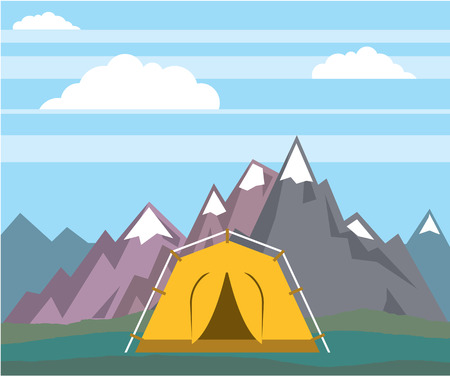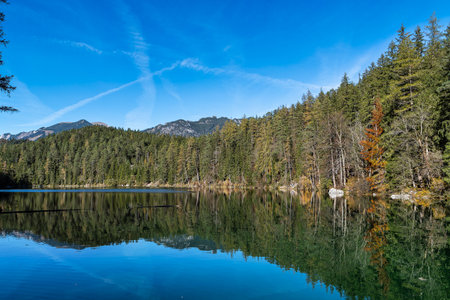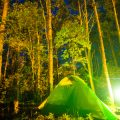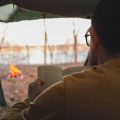Introduction to Pacific Northwest State Parks
The Pacific Northwest is a camper’s dream, packed with state parks that offer everything from misty coastlines and towering forests to volcanic peaks and rolling grasslands. This region covers Washington, Oregon, and parts of Idaho, giving you access to some of the most diverse outdoor landscapes in America. Whether you’re looking for a quiet spot to pitch your tent or an action-packed adventure basecamp, these state parks deliver unique experiences you won’t find anywhere else.
Why Campers Love the Pacific Northwest
What sets the Pacific Northwest apart? For starters, the sheer variety. You can wake up by a crystal-clear mountain lake one day and fall asleep listening to ocean waves the next. The region’s mild climate means camping season stretches longer than in many other places, and lush evergreen forests provide year-round shade and shelter. Many parks are also dog-friendly and have well-kept facilities like hot showers, picnic tables, and fire pits—essentials for both beginners and veteran campers.
Diverse Landscapes at Your Fingertips
| Landscape Type | Examples of State Parks | Special Features |
|---|---|---|
| Coastal | Fort Stevens (OR), Cape Disappointment (WA) | Sandy beaches, tide pools, whale watching |
| Rainforest | Lake Quinault (WA), Silver Falls (OR) | Mossy trails, waterfalls, old-growth trees |
| Mountains & Lakes | Lake Wenatchee (WA), Wallowa Lake (OR) | Boating, fishing, hiking trails with views |
| High Desert | Cottonwood Canyon (OR), Bruneau Dunes (ID) | Stargazing, wide-open skies, wildlife spotting |
The Unique Appeal of PNW State Parks
No two parks are exactly alike here. Some offer primitive sites tucked deep in the woods for solitude seekers; others have RV hookups just steps from epic river vistas. Outdoor activities range from kayaking and rock climbing to simple pleasures like roasting marshmallows over a campfire. Local culture shines through too—you’ll find ranger-led events on salmon runs or Indigenous history, plus easy access to regional foods like fresh seafood or wild huckleberries in summer. All this makes Pacific Northwest state parks a true paradise for anyone who loves the outdoors.
2. Essential Gear and Packing Tips
Real-Deal Gear for the Pacific Northwest
The Pacific Northwest is legendary for its wild weather swings, thick forests, and rugged coastlines. Whether you’re pitching your tent in Washington’s Olympic National Park or hiking through Oregon’s Columbia River Gorge, your gear can make or break your trip. Here’s a no-nonsense guide to packing smart and staying comfortable out there.
Must-Have Camping Equipment
| Item | Why You Need It | PCT-Ready Tip |
|---|---|---|
| Four-Season Tent | Rain, wind, even snow—expect it all. | Look for waterproof seams and a sturdy rainfly. |
| Synthetic Sleeping Bag (0–20°F) | Dampness is a given; down bags can lose insulation power if wet. | Synthetic fill dries faster and stays warm even when soggy. |
| Sleeping Pad | Insulation from cold, wet ground is a must. | Closed-cell foam pads are tough and reliable. |
| Headlamp with Extra Batteries | Nights fall fast in dense forests. | Go hands-free for firewood gathering or midnight bathroom runs. |
| Bear Canister/Food Storage Bag | Keep critters (big and small) out of your chow. | Required in many state parks—don’t risk fines or lost food! |
| Campsite Chair or Sit Pad | The ground gets cold and muddy—your butt will thank you. | Collapsible models save space in your pack. |
| Waterproof Dry Bags | Keeps gear dry during rainstorms or river crossings. | Double up on electronics and clothing protection. |
Packing List: Clothing Built for PNW Weather
| Layer | Recommended Item | Packing Pro-Tip |
|---|---|---|
| Base Layer | Merino wool or synthetic long underwear top/bottoms | Avoid cotton—it won’t dry fast! |
| Mid Layer | Fleece pullover or insulated jacket (synthetic fill preferred) | Packs small, warms big. |
| Outer Layer | Waterproof-breathable shell (jacket & pants) | Taped seams are non-negotiable in the PNW drizzle. |
| Socks/Underwear | Wool or synthetic blends (multiple pairs) | Damp feet = blisters. Swap often. |
| Shoes/Boots | Waterproof hiking boots with good tread & ankle support | Add gaiters for mud/snow days. |
Survival Tools You’ll Actually Use Out There
- Pocketknife/Multitool: For food prep, repairs, and emergencies.
- Lighter & Waterproof Matches: Wet wood? No problem if you’ve got reliable ignition sources.
- Tarp/Paracord: Quick shelter from sudden downpours or windbreak setup at camp.
- Trekking Poles: Muddy slopes and rocky trails are easier—and safer—to tackle with extra stability.
- Mosquito Head Net & Bug Spray: Trust us: bug season hits hard after the spring thaw near lakes and rivers!
Packing Hacks from Local Campers
- Stuff sacks: Color-code them to find your gear fast when it’s pouring rain at dusk.
- Ziploc bags: Cheap insurance for maps, snacks, phone, or first aid supplies.
- Duct tape: Wrap some around your water bottle for quick repairs on trail shoes, tent poles, or busted gear straps.
If you pack with purpose and focus on versatility, you’ll be ready to handle whatever the Pacific Northwest throws your way—from sideways rain to epic sunsets over mossy forests.

3. Top State Parks to Visit
Ready to roll out your sleeping bag and set up camp? The Pacific Northwest is packed with epic state parks, each with its own vibe and adventures. Here’s a spotlight on some of the best spots in Washington and Oregon that every camper should have on their radar.
Washington State Parks
| Park Name | What Makes It Awesome |
|---|---|
| Deception Pass State Park | Breathtaking bridge views, dramatic cliffs, coastal forests, great for hiking, kayaking, and beachcombing. |
| Lake Wenatchee State Park | Crystal-clear mountain lake, awesome swimming, fishing, paddleboarding, and winter snowshoeing. |
| Riverside State Park | Pine forest trails right by Spokane River, rock climbing at Deep Creek, horseback riding, and plenty of campsites. |
| Fort Worden Historical State Park | Historic military bunkers to explore, waterfront camping, close to Port Townsend’s cool downtown. |
Oregon State Parks
| Park Name | What Makes It Awesome |
|---|---|
| Silver Falls State Park | The famous “Trail of Ten Falls”—walk behind waterfalls! Lush forests and top-notch camping facilities. |
| Nehalem Bay State Park | Dunes meet the ocean—beachfront camping, crabbing, kayaking, and wild elk sightings. |
| Smith Rock State Park | Mega-popular for rock climbing, jaw-dropping canyon views, hiking, and stargazing at night. |
| Jessie M. Honeyman Memorial State Park | Lakes for boating and fishing, sand dunes for ATV riding or sledding—family favorite! |
Campsite Pro Tips:
- Book Early: Summer weekends fill up fast—reserve your spot online as soon as you can.
- Check Fire Restrictions: Always double-check local fire rules before you strike a match—especially in late summer.
- Wildlife Awareness: Store food properly; bears and raccoons love an easy meal!
- Packed-In = Packed-Out: Leave no trace. Take all your trash with you and leave the park better than you found it.
No matter if youre after deep woods solitude or a lively family campground near the water, these state parks deliver the best of Pacific Northwest adventure. Grab your gear and get ready for some unforgettable nights under the stars!
4. Campfire Cooking and Outdoor Meals
There’s nothing like a hot meal after a long day exploring the wild beauty of the Pacific Northwest. Whether you’re camping in Oregon’s lush forests or Washington’s rugged coastlines, campfire cooking is part of the adventure. Here’s how to plan easy, hearty meals that keep your energy up and your spirits high—plus some local favorites and smart hacks for hungry campers.
Tips for Planning Easy & Hearty Camp Meals
- Prep at Home: Chop veggies, marinate meats, and portion out spices before you hit the road. Store ingredients in zip bags or airtight containers for quick grab-and-go cooking.
- One-Pot Wonders: Stews, chilis, and pasta dishes are perfect for tossing into a single pot over the fire—less cleanup, more time enjoying nature.
- Pack Local: Pick up fresh produce and regional specialties at local farmers markets along your route—think Rainier cherries, wild salmon, or Tillamook cheese.
- Keep it Simple: Stick to recipes with minimal ingredients and steps. Foil packet meals (meat + veggies + seasoning) are lifesavers and cook easily over coals.
Campfire Cooking Hacks for Hungry Adventurers
| Hack | Description |
|---|---|
| Use a Grill Grate | Bring a portable grill grate to set over the fire ring—great for burgers, fish, or veggies. |
| Coffee Can Oven | Bake biscuits or cinnamon rolls by placing dough in a coffee can and setting it near hot coals. |
| Mason Jar Scrambles | Crack eggs with mix-ins in mason jars at home; pour into a skillet at camp for an instant breakfast. |
| Stick Cooking | Roast hot dogs, sausages, or marshmallows on sturdy sticks—classic and fun for all ages. |
| Pancake Batter Bottles | Mix batter at home and store in squeeze bottles for easy campfire pancakes with no mess. |
PACNW Local Favorites to Try at Camp
- Cedar Plank Salmon: Grill local salmon fillets on cedar planks right over the fire. Season with lemon and herbs for an iconic Pacific Northwest taste.
- Smores with a Twist: Swap standard chocolate for locally made dark chocolate bars or add peanut butter cups between your graham crackers.
- Berries & Oats Breakfast: Simmer oatmeal with fresh blackberries or huckleberries picked nearby—a hearty way to start your morning hike.
Packing List: Camp Kitchen Essentials
- Cast iron skillet or Dutch oven
- Heat-resistant gloves
- Reusable plates, bowls, utensils
- Lighter/matches & firestarter
- Tongs & spatula
- Tin foil & resealable bags
- Cooler with ice packs
- Biodegradable soap & sponge (clean up matters!)
With these tips and hacks, you’ll be fueling your adventures while soaking in the best flavors the Pacific Northwest has to offer—all from your own cozy campsite kitchen.
5. Outdoor Safety and Wildlife Awareness
Staying Safe in Pacific Northwest State Parks
Camping in the wild beauty of the Pacific Northwest is unforgettable, but it’s important to respect nature and be prepared for anything. Here’s what you need to know to stay safe and aware when exploring state parks in Washington, Oregon, or Idaho.
Bear Protocols: What Every Camper Should Know
| Dos | Donts |
|---|---|
| Store food in bear-proof containers or hang it 10 feet off the ground and 4 feet from tree trunks. | Never leave food, trash, or scented items (like toothpaste) unattended at your campsite. |
| Make noise while hiking—clap, talk, or sing to avoid surprising bears. | Don’t approach or try to feed wildlife, even if they seem friendly or harmless. |
| If you see a bear, back away slowly. Give it plenty of space and avoid eye contact. | Don’t run. Sudden movements can trigger a bear’s chase instinct. |
First Aid Must-Knows for Campers
- Carry a basic first aid kit: Include bandages, antiseptic wipes, tweezers (for splinters/ticks), pain relievers, and any personal medications.
- Treat cuts and scrapes quickly: Clean wounds with water and cover with a sterile bandage to prevent infection.
- Know how to handle sprains: Rest, ice (use cold river water in a plastic bag), compress with a bandage, and elevate the injury if possible.
- Bites and stings: Remove stingers if present, wash area, apply ice to reduce swelling. Watch for allergic reactions.
- Learn basic CPR: Take a course before your trip—it could save a life.
What To Do If the Weather Takes a Turn
Packed for Anything: Gear Checklist
- Rain gear: Waterproof jackets/pants are essential—Pacific Northwest rain can come out of nowhere!
- Extra layers: Weather can shift fast; pack fleece or wool for warmth even in summer months.
- Shelter: Make sure your tent is weatherproof and always stake it down securely.
- Emergency blanket: Lightweight and lifesaving if temps drop unexpectedly.
If You Get Caught in Bad Weather:
- Avoid open fields during lightning storms—seek shelter among low trees but not under isolated tall trees.
- If lost in fog or heavy rain: Stay put and use your whistle or flashlight to signal for help. Don’t wander far from marked trails unless necessary for safety.
- If temperatures drop suddenly: Change out of wet clothes immediately. Use dry layers and huddle together for warmth if needed.
The Pacific Northwest rewards those who respect its wildness. With these tips, you’ll be better equipped to handle whatever Mother Nature throws your way on your next camping adventure!
6. Leave No Trace and Respecting Nature
Why Leave No Trace Matters in the Pacific Northwest
The Pacific Northwest is famous for its lush forests, crystal-clear lakes, and rugged coastlines. With so many people coming to enjoy these wild spaces, it’s crucial to protect them for future generations. Following Leave No Trace (LNT) principles isn’t just a rule—it’s a responsibility every camper should take seriously.
Seven Principles of Leave No Trace
| Principle | Practical Tips |
|---|---|
| Plan Ahead and Prepare | Check park rules, weather, and pack essentials. Bring reusable gear instead of single-use items. |
| Travel and Camp on Durable Surfaces | Stick to trails and established campsites. Avoid trampling vegetation or setting up camp near water sources. |
| Dispose of Waste Properly | Pack out all trash, leftover food, and litter. Use provided waste stations or carry your garbage out with you. |
| Leave What You Find | Don’t pick plants, move rocks, or carve into trees. Take only photos and memories. |
| Minimize Campfire Impact | Use a camp stove when possible. If fires are allowed, keep them small and use designated fire rings. |
| Respect Wildlife | Observe animals from a distance. Never feed wildlife—store food securely to avoid attracting critters. |
| Be Considerate of Other Visitors | Keep noise down, yield on trails, and respect quiet hours. Everyone deserves a peaceful nature experience. |
Setting an Example for Fellow Campers
- Lead by Action: Show others how to camp responsibly by following LNT principles yourself.
- Educate Friends & Family: Share why caring for nature matters—especially with kids or first-time campers.
- Speak Up Politely: If you see someone breaking the rules, kindly let them know how they can help protect the park too.
- Volunteer: Join local park cleanups or trail maintenance days if you want to give back even more.
Packing Checklist for Low-Impact Camping
| Item | Why It Matters |
|---|---|
| Reusable water bottle & mug | Cuts down on plastic waste at campsites and on trails. |
| Trowel & toilet paper (or WAG bag) | Makes it easy to follow “pack it in, pack it out” guidelines for human waste when facilities aren’t available. |
| Bags for trash and recycling | You’ll always have a way to take your waste home with you. |
| Bare-bones first-aid kit | Treat minor injuries without disturbing natural resources for makeshift solutions. |
Your Actions Matter!
The Pacific Northwest’s state parks are some of America’s wildest treasures. Whether you’re backpacking deep in the Olympic Mountains or setting up your tent beside an Oregon lake, practicing Leave No Trace keeps these places beautiful and accessible for everyone. Set the standard—and make outdoor adventures better for all who follow.


